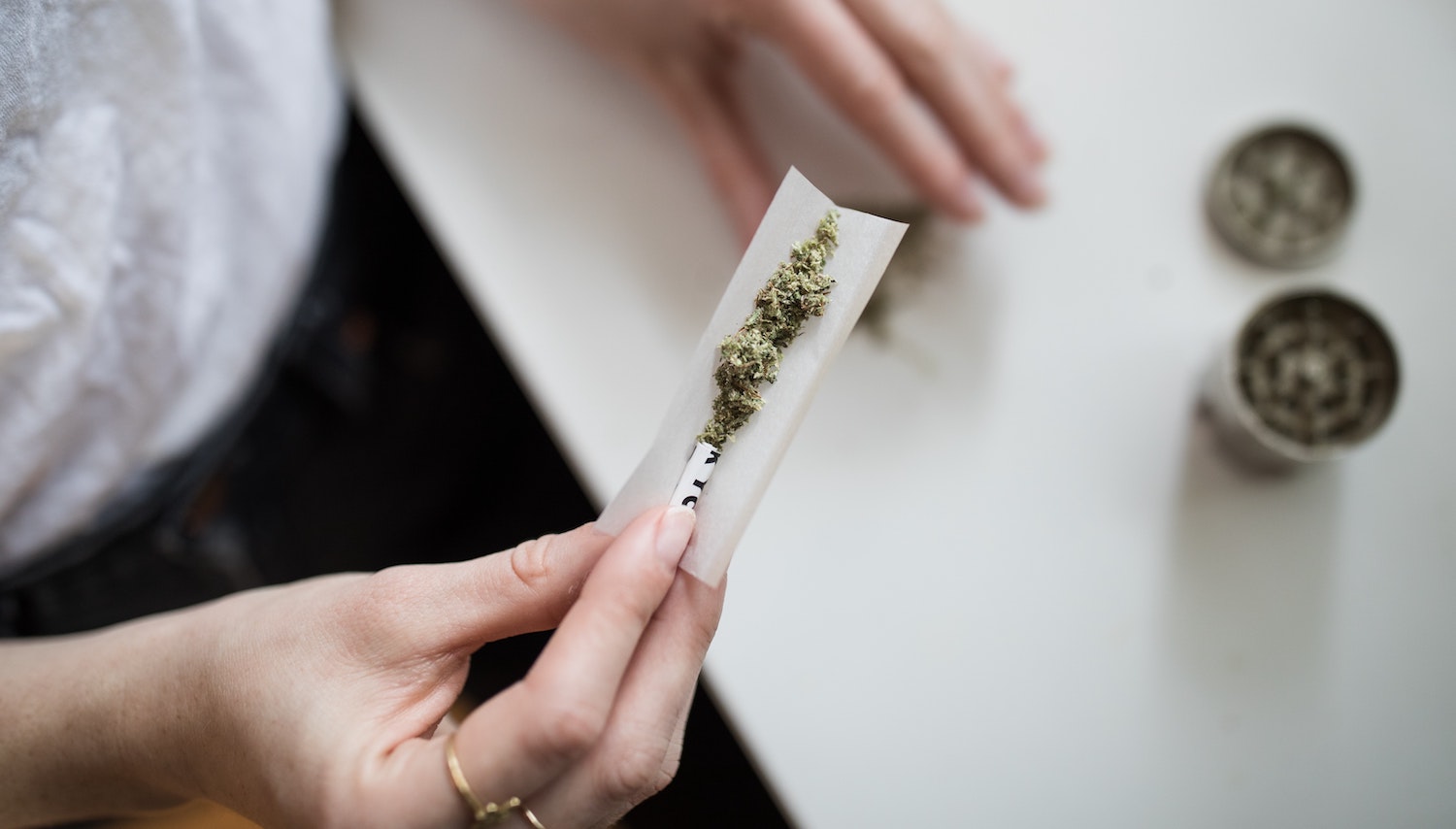“I abstain for my brother who cannot” – Joseph Livesey
In recent years, the ‘harm reduction’ approach to dealing with addiction has been prominent in the discourse and drug policies promoted by the Left in western capitalist nations. Typically presented as a public health framework, ‘harm reduction’ has been embraced as part of a political and legal effort to decriminalize all drugs, including “hard” drugs such as cocaine and heroin. These efforts mirror shifting cultural attitudes amongst most Left groups, wherein narcotic and alcohol consumption are increasingly deemed harmless or even positive, as in the case of cannabis.
As with so many positions taken up by the modern Left, this ostensibly progressive response to the War on Drugs of previous decades is instead a reactionary and anti-working class position of the worst kind. It stems from profound pessimism. The Left has turned towards advocating for mass anaesthetisation of society because, quite simply, it has given up on any idea of the working class becoming the ruling class. This isn’t new. The idea of the dictatorship of the proletariat was dismissed by most Marxist groups 40 years ago under the influence of industrial defeats and ideological eclecticism represented by the Eurocommunists. While there was always a strand of Leftist thought that tended towards libertinism, this is the only element that has survived the defeats of the working class in the 1980s and 1990s. Since the Left no longer believes that the proletariat can become the ruling class, then efforts to raise the political, cultural and intellectual level of the working class are pointless. No effort needs to be made in developing the kind of collective and self-discipline that the likes of Che Guevara saw as vital in engaging in a serious project of revolutionary change.
In the twilight of the defeat of the organized working class in Britain, the Left joined hands with the bourgeoisie in advocating for mass stupefaction of society. Drugs and alcohol are the consolation prize for increased alienation and atomization. As the British ruling class consolidated their victory over the organized working class, they also further relaxed alcohol licensing laws in 1988 and again in 2003. The Left has now come to embrace the idea of legalizing cannabis, all in the name of harm reduction or personal freedom, with harder drugs on the table. That the individual and his/her community should be left alone, or even supported, to self-medicate in peace has become a core cause of the modern Left.
The Temperance Movement: An Early Working Class Response to Narcotics
One of the many historical legacies of working class activism that has been buried under this avalanche hollow libertinism has been the temperance movement. Initially emerging in the late 1820s, the temperance movement gained coherence with the passage of the liberalizing Beer Act of 1830. This act stood for forty years and enabled anyone who paid two guineas to obtain a license to sell beer, thereby greatly expanding access to alcohol. At the time, heavy drinking was condoned and even encouraged for people of both sexes and nearly all ages. The Act prompted temperance activist and former weaver Joseph Livesey and seven other men to create and take a pledge to abstain from all alcohol. This created a sharp distinction between Livesey and the more petit-bourgeois temperance campaigners, who instead preached restraint.
The working class temperance movement saw clearly that excessive alcohol consumption was something that, if not actively promoted by the ruling class, then it was at least tolerated by the bourgeoisie. As Engels observed in The Condition of the Working Class in England, the bourgeoisie frequently complained about drunkenness but still went ahead and passed the Beer Act, which vastly worsened the problem. Though Engels criticized the teetotallers in both the Communist Manifesto (on the grounds of being bourgeois socialism) and The Condition of the Working Class (on the grounds of being ineffective), both he and Marx noted the horrific damage wrought by alcohol consumption upon British workers. On this point they agreed with the working-class end of the temperance movement led by the likes of Livesey. Indeed, later temperance-inspired working-class movements such as the North American Knights of Labor directly cited alcohol as an impediment to a disciplined labor movement.
The contemporary reputation of the temperance movement is that of a purely religious crusade. While there was an important religious element within the temperance movement, its most distinctive and impactful characteristic was not its association with radical Christian sects, but its links to Chartism and other early attempts to build working class politics in Britain. At this time, complete abstention from alcohol and the campaign for working class political rights were seen by many as going hand in hand. The arguments made by the likes of Livesey had a clear appeal to the Chartist movement and were to have an enduring influence on the British working class movement. As historian F.M.L Thompson notes in The Rise of the Respectable Society:
The working class produced a long string of leaders who were strong temperance advocates, running from Henry Vincent and William Lovett, the teetotal Chartists, through ‘new model’ trade union leaders of the 1850s and 1860s like Robert Applegarth, and on to the ‘new trade unionists’ and early Labour leaders of the late Victorian years, men like Tom Mann, Will Thorne, John Burns, Keir Hardie, and George Lansbury.
It is stated by contemporary advocates (following on from the case made by Timothy Leary in The Psychedelic Experience) for drug decriminalization that narcotic consumption can have the positive effect of leading to “consciousness expansion.” Contrast this with attitudes of the temperance movement and Chartism, who instead believed that the expansion of consciousness would best be achieved through acquisition of greater knowledge and the pursuit of political rights. A huge part of both movements was education. For example, the temperance movement organized countless well attended lectures educating average people on the risks and dangers of alcohol. Especially during their initial stages, prior to seeing some of their goals expressed in policy, both movements could only depend on voluntary buy-in by those they targeted. The early temperance movement in particular was premised on the idea that people could make a rational and better choice armed with the right knowledge, and given alternatives. To that end, the temperance movement set up numerous ‘Temperance Halls’ throughout Britain, which provided spaces where socialization was possible without having to consume alcohol.
The shared point of view between men like Livesey and the leaders of the Chartist movement was that if workers could shed the binds placed on them by alcohol they could properly begin to take their place within British society—including being afforded political rights denied to them by the ruling class.
Chartism and temperance were both successful and unsuccessful. The Chartist movement gained enough momentum and popular support so that the bourgeoisie recognized the threat and met it with a deft combination of repression and some later concessions (as with the expansion of franchise rights) that marked the approach of the British ruling class in this period. And though the temperance movement did not succeed in pushing alcohol consumption out of working-class communities, it did shift moral and legal standards around alcohol, going as far as pushing the British government to impose penalties for alcohol consumption, such as minimizing the hours during which alcohol could be served. Temperance also changed cultural attitudes towards alcohol. Whereas it was once common practice (and considered healthful) to serve beer to school children, the temperance movement led to the banning of the sale of alcohol to under 16s via the Licensing Act of 1872.
The influence of the temperance movement within the British working class lasted a considerable time. Early Labour Party leaders such as Philip Snowden were advocates for teetotalism, as were many other Labour MPs hailing from the trade union movement. This influence only truly came to an end in the 1960s when the number of working class MPs terminally declined and the upper echelons of the Labour Party was taken over by the petite bourgeoisie. In his book The War We Never Fought Peter Hitchens observes that the 1970s Labour cabinet of Harold Wilson was split entirely along class lines, with ministers of working class backgrounds taking a harder line on sentencing for cannabis possession, while the petit-bourgeois ministers (including Tony Benn) favored greater leniency. The advocates for the decriminalization and legalization of drugs in the name of ‘harm reduction’ continue this tradition by arguing that the War on Drugs has in effect been an assault on workers.
A Return to Intemperance
The contemporary Left, totally divorced from the working class, has happily dumped religion only to replace it with substances even stronger than opium. The embrace of mass narcotic consumption is an embrace of all the worst aspects of modern bourgeois society, based as it is around anti-social individualism. The lesson to be gleaned from the temperance movement and teetotalism is not that abolition of alcohol consumption failed, it is how setting a higher standard for behavior and self-discipline can empower working-class movements around wages and political rights, and yield improvements to the status quo in terms of the health and culture of the working class.
What policy framework would be best suited for contemporary drug abuse is a topic for legitimate debate. The War on Drugs was clearly flawed. But at the very least, and rather than actively advocating for the consumption of what are demonstrably dangerous substances, today’s socialists should be actively educating people of the dangers of drugs, and the physical, intellectual and societal damage consumption inflicts. Socialists must rediscover the attitude shown by the early temperance campaigners as well as the early socialists they helped inspire and abstain from both narcotics and alcohol to set this higher standard. While self-discipline and abstinence is seen today as a value associated with the political right, we must not forget that it was through the efforts of decades of collective working class effort that succeeded in spreading these ideas at a time when they were almost completely absent in most communities. The path back to making socialism into a serious working class politics again must start at a rejection of the bourgeoisie’s prescription of narcotics to treat the hyper-alienation and atomization their mode of production inflicts. Rebuilding the movement depends upon fostering a new layer of socialists prepared to give up the “cure” offered by capital and focus relentlessly upon real solutions, that is class struggle.









